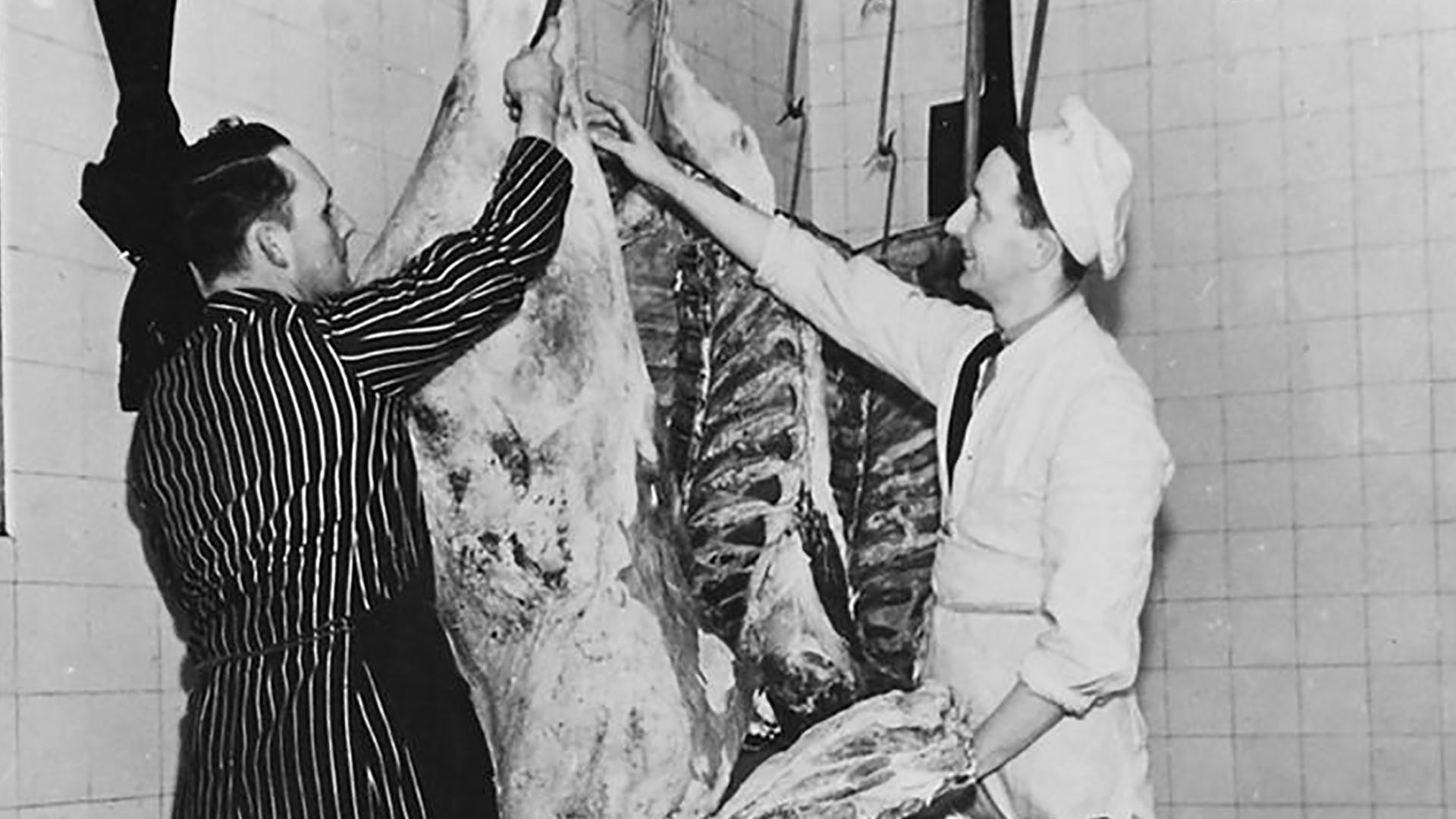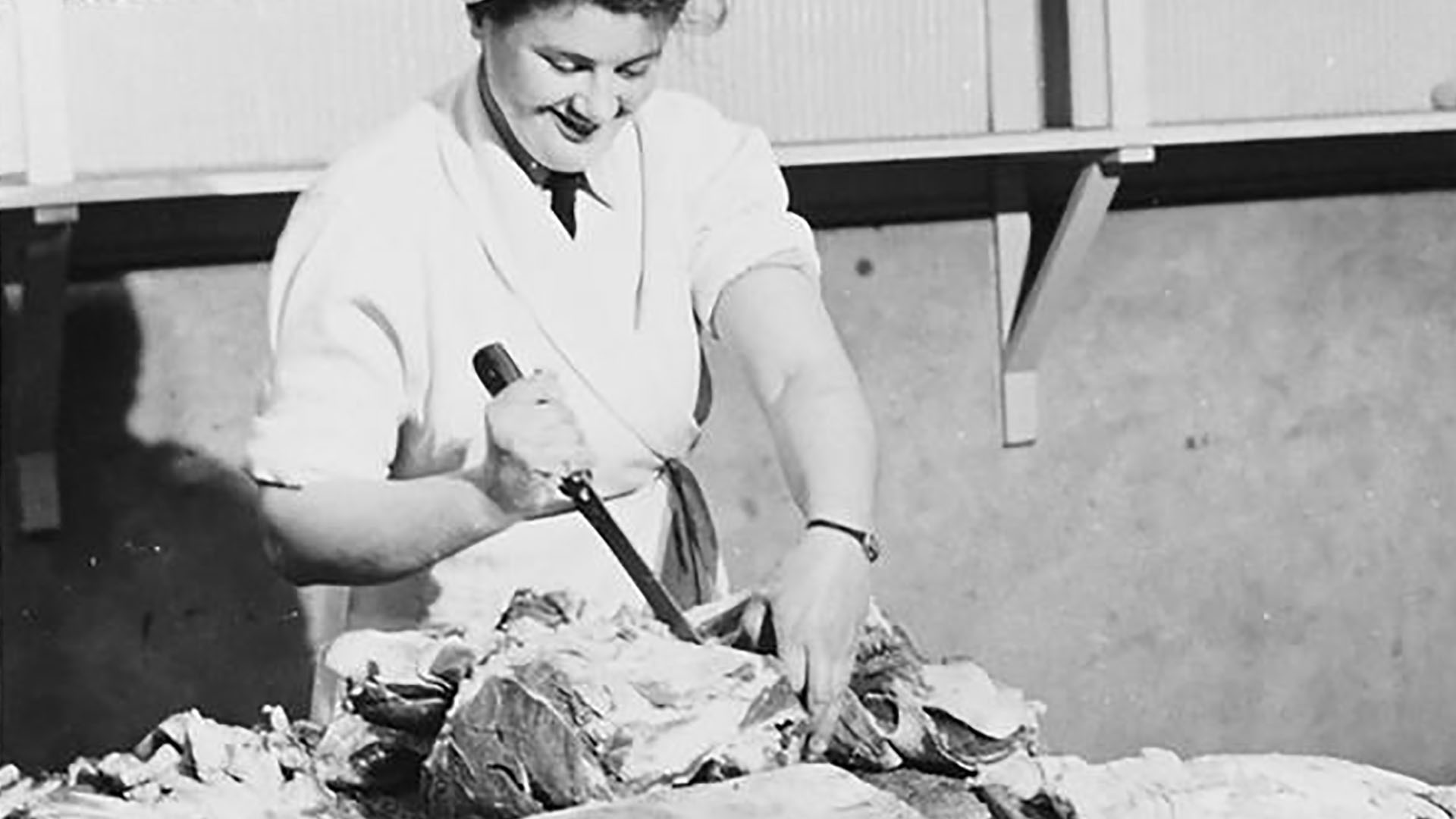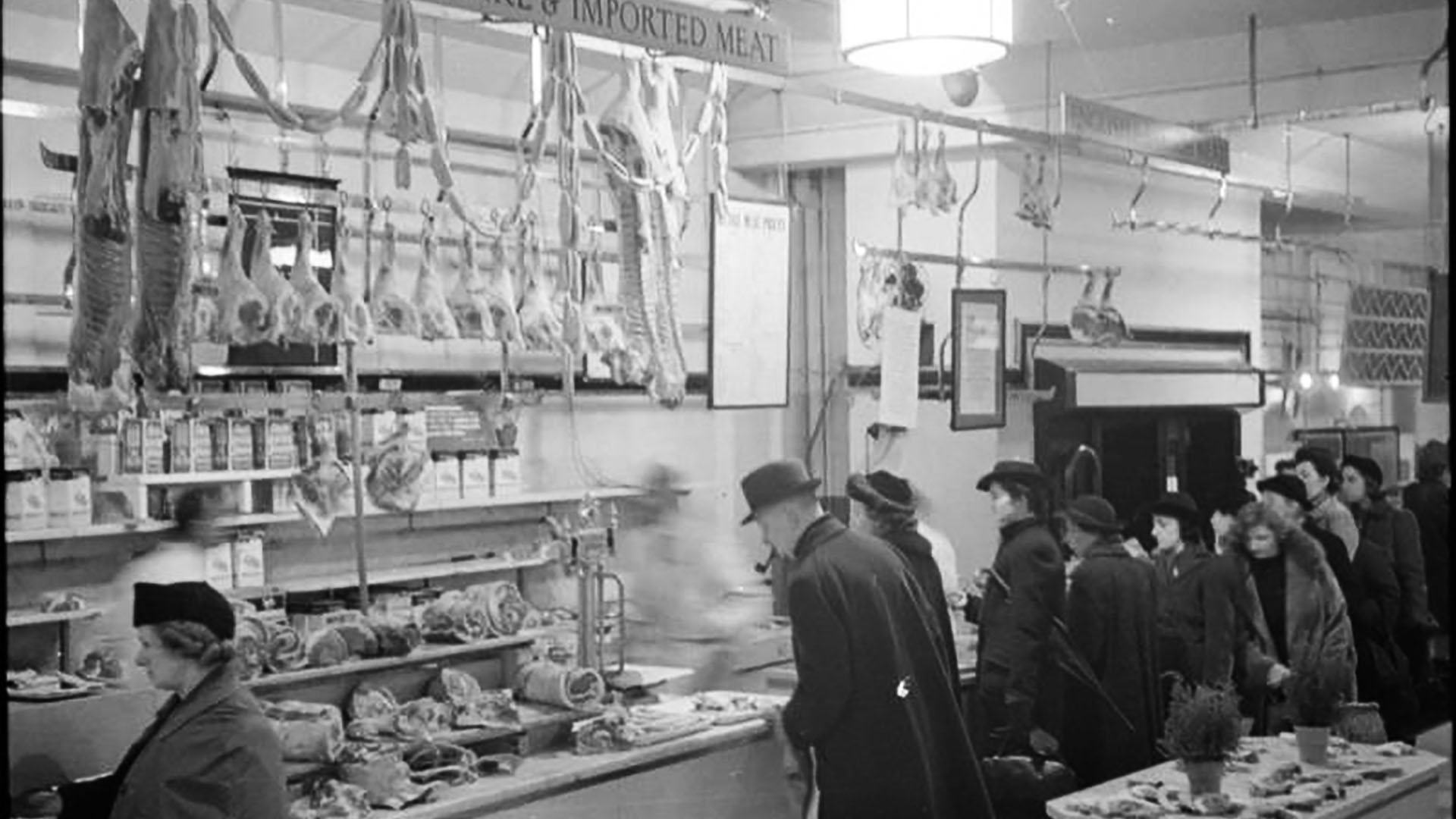During the Second World War, food rationing began on 8th January 1940. Among the first foods restricted were bacon, butter, and sugar. By 1942, other food and drink items were subject to rationing but in 1940 meat remained readily available. The Belfast Telegraph, published in Northern Ireland, was one of many newspapers providing helpful cooking hints and tips to the public to cope with wartime restrictions.
While many of these recipes published by the Belfast Telegraph may not look the most appetising today, they would have been more popular in 1940. In modern times, liver, heart, tongue, and sweetbreads have fallen out of fashion. Over 80 years ago, however, these items kept the nation going through wartime.
What did the Belfast Telegraph recommend for a tasty meal?
Stuffed and baked liver
1 lb. liver, a few slices of fat bacon, sage stuffing, pepper and salt.
Get your butcher to let you have the liver without slicing it. Wipe it with a damp cloth. Slice it through the centre so as to have a long strip. Prepare the stuffing and spread it over the liver. Season with pepper and salt, roll up, and tie with a piece of twine.
Place a few slices of fat bacon over the top of the roll. Cover with a piece of greased paper, put into a baking tin. Add 1 cup of water and bake in a moderate pven for 1.5 to 2 hours. Baste often with the gravy from the dish. Serve with a green vegetable, and mashed potatoes, and with gravy made from the liquor in the dish.
Baked sheep's heart
3 sheep's heart, 2 ounces breadcrumbs, 1 ounce chopped suet, 2 slices fat bacon, 1 teaspoon chopped parsley, a pinch of thyme, 1 ounce dripping or margarine, pepper, and salt.
Soak the hearts in salted water for 1 hour, remove the pipes and cut a cavity for stuffing. Prepare the forcemeat and bind together with dripping. Fill up the cavities with the forcemeat. Place them in a baking tin, spread over with a little dripping, and 0.5 cups of stock or water. Bake for 2 to 2.5 hours, basting frequently.
When cooked, take hearts out of the tin, pour off the fat, stir in one teaspoon flour, and add sufficient water to make the gravy. Boil for five minutes before serving.
Fried tripe with bacon
Cooked tripe, bacon, frying batter, frying fat, pepper, and salt.
Use thick tripe for this dish. Cut it into pieces 3 inches by 2 inches and boil for about 2 hours, or until tender. Drain well and dry with a cloth. Season a little flour with the pepper and salt, and dip the pieces of tripe in it. Have the frying batter prepared beforehand.
Dip the pieces of tripe into it, and drop into the hot frying fat, and fry a golden brown colour. Drain on a piece of kitchen paper. Garnish with slices of fried bacon and springs of parsley. Serve with chip potatoes.
Liver patties
0.5 lb cooked liver, 0.5 lb fat bacon or ham, puff pastry, 0.5 chopped onion, 1 teaspoon chopped parsley, a few chopped mushrooms, pepper and salt.
Minch or chop the liver and bacon, mix together with the chopped onion, parsley, and mushrooms. Season with pepper and salt. Roll out the puff pastry, line some patty tins with it, fill up the mixture. Cover the tops with pastry, brush over with milk or white of egg. Bake in a moderate oven for 20 minutes. Serve with a green vegetable and mashed potatoes.
Sweetbreads
Wash the sweetbreads and soak in cold water for about two hours. Place them in a saucepan, cover with cold water, and half a teaspoon lemon juice to blanch them. Bring to the boil, cook for several minutes, then drain. Plunge them into cold water and remove the skin and fat without breaking them. Put between two plates with a weight on top, and put aside until quite cold, then use as desired.
Braised sheep's tongues
4 sheep's tongues, 4 slices of bacon, 2 onions, 2 carrots, a sprig of parsley, 2 sticks of celery, 1 ounce dripping or margarine.
Soak the tongues in salted water for 2 hours or longer. Put the tongues into fresh cold water, bring to the boil and cook for 20 minutes. Melt the dripping in another saucepan, fry the diced bacon in it. Remove the skins from the tongues. Lay them on top of the fried bacon. (The skins can be removed by placing the tongues in cold water).
Then add the sliced onions, carrots, parsley, and celery. Season with pepper and salt, add 1 cup of stock or water. Cover the saucepan tightly and simmer gently for 2 hours. Place the strained vegetables on a hot dish, place the tongues on top. Thicken the stock with a little blended flour, pour over the tongues, or send to the table in a sauceboat.
Fried sweetbreads with tomato sauce
Sweetbreads, 1 white of egg, breadcrumbs, deep frying fat, tomato sauce, pepper, and salt.
Prepare the sweetbreads as above, cut up into slices 0.75 inches thick. Season them with pepper and salt. Add one teaspoon of water to the white of the eggs, and whip slightly. Dip the slices of sweetbread in the egg and toss in breadcrumbs. Have the frying fat smoking slightly, and fry the sweetbreads in it a golden brown colour. Drain on a kitchen paper. Serve on a hot dish on a paper d’oyley. Garnish with sprigs of fried parsley, and serve with the tomato sauce.
Fricasseed sweetbreads
Two sweetbreads, 1.5 ox margarine, 2 oz flour, 1 pint white stock, 1 cup rich milk, pepper, and salt, a few mushrooms (can be omitted).
Treat the sweetbreads as previously given, cut into 0.5 inch slices. Melt the margarine in a saucepan, stir in the flour, mix thoroughly, but don’t let it brown. Add the hot stock, skimming quickly all the time. Cook for ten minutes then add the milk and mushrooms, season with pepper and salt, Put in the slices of sweetbread and cook gently for another 0.5 hours. Serve in a silver or glass oven dish. Garnish with slices of lemon.
The article went on to question whether families would grow used to these more unusual meals. With traditional roasts and fillets perhaps growing more scarce or expensive, it could prove useful in knowing how to make the most of all cuts.
Finally, the suggestion was made that the lack of popularity of these meats was down to a lack of skill on the part of the cook rather than the quality of the meat. Will you be enjoying liver, tongue, and sweetbreads this year or has the Northern Irish palette changed once again?


